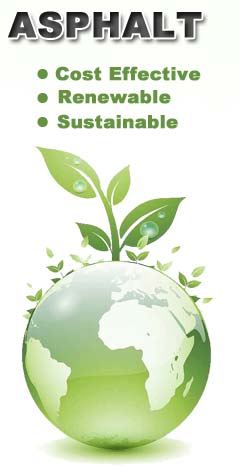
Our state of the art asphalt recycling plant accepts discarded milled or chunked asphalt at no charge and combines it with newly processed material and is completely reused.
Recycling
Recycled Asphalt
Asphalt is the most recycled material in the United States.
The asphalt
industry reuses and recycles nearly 100 million tons
of its
own
product every year, making it America’s number one recycler.
Not only is
asphalt pavement America’s most recycled and reused material, it now is being recycled and reused at a rate over 99 percent. Approximately 60 million tons are reused in new asphalt mixes, and some 40 million are used in other pavement-related applications, such as aggregate road base.
Not only does recycling asphalt pavements save taxpayers money, it also saves hundreds of acres of landfill space each year too. Materials from other industries are routinely recycled into asphalt pavements instead of going into landfills.
Some of the most common recycled materials in asphalt include:
- rubber from used tires
- glass
- asphalt roofing shingles
- and blast furnace slag ( a by product of iron and steel production that actually makes our roadways safer!)
Asphalt plants, like Wilk also recycle the fine mineral particles that are generated in the process of producing asphalt pavement material. This routine recycling of co-generated material helps to conserve natural resources.
Asphalt is Renewable
Asphalt pavement is unique not only in the volume that is recycled, but also in its renewability. Because of the ability to reuse and recycle asphalt material indefinitely, our highways are a resource for future generations. Asphalt is comprised of approximately 95 percent aggregates (stone, sand and gravel) and about 5 percent asphalt cement.
When asphalt pavement is reused in a new asphalt mix, the old asphalt cement is rejuvenated and it becomes an active part of the glue that holds the new pavement together, just like the old aggregate becomes part of the aggregate content of the new mix. To learn more about recycled asphalt and green paving practices, visit www.pavegreen.org